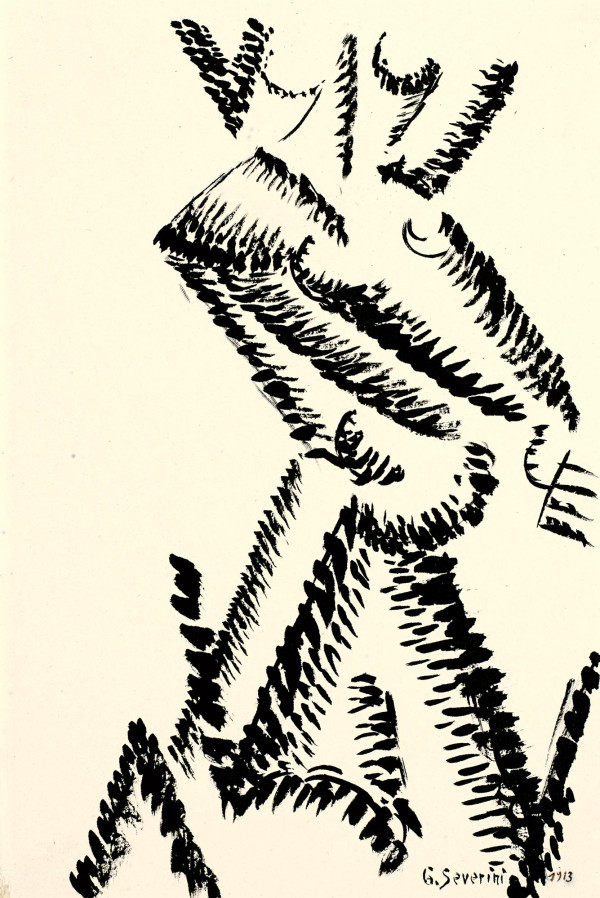
Introduction
The Futurist movement, a dynamic and influential art and cultural movement of the early 20th century, was born out of a fervent desire to embrace the rapid changes and innovations of the modern world. Emerging in Italy in the early 1900s, Futurism sought to break free from tradition and celebrate the exhilarating possibilities of the future. In this article, we will explore the origins, key figures and defining principles that marked the inception of the Futurist movement.
Futurism can be traced back to the fiery imagination or revolutionary spirit of Italian poet Filippo Tommaso Marinetti. In 1909, Marinetti published his ‘Manifesto of Futurism’ in the French newspaper Le Figaro. A passionate declaration of the movement’s principles, it proclaimed the end of the old world and the birth of a new one defined by speed, technology and an insatiable hunger for progress.
Principles of Futurism
The Futurists embraced the machine age with open arms. They hailed the beauty of steam engines, automobiles, and aeroplanes, seeing them as symbols of a new era. They believed that technology would liberate humanity from the constraints of the past. Unlike many movements, Futurism was never a ‘style’ of painting, and adopted a wide range of artistic vocabularies over the years. Initially it was dominated by Divisionism.

Speed became a central theme of Futurist art and ideology. The movement was obsessed with the velocity of modern life and celebrated it in paintings, literature, and performances. Works like Umberto Boccioni’s Dynamism of a Cylicst vividly capture this fascination with motion.

Futurists vehemently rejected tradition, considering it stagnant and outdated. They aimed to break free from classical norms in favour of innovation and originality. This rejection extended to everything from art and literature to politics and social norms.

One of the most controversial aspects of Futurism is the fact that early Futurists were enthusiastic supporters of militarism and nationalism. Marinetti famously declared, “We will glorify war—the world’s only hygiene” and saw war as a means of cleansing society and rejuvenating it.

Later Futurism
As the movement progressed, it branched out and explored different media, expanding Futurism to fashion, interior design, architecture, theatre and cookery. It also developed its own subgenres such as Aeropittura.
Translated as ‘Aeropainting’, this vividly captured the spirit of flight and the modern age. Aeropainting was a major expression of the second phase of Italian Futurism, from 1929 until the early1940s. This was a time of great innovation and excitement in the world of aviation, as flight technology advanced rapidly.
Aeropainting sought to capture the essence of flight, speed and motion. This often led to non-representational compositions where geometric shapes, lines and bold colours dominated the canvas. Aeropainters drew inspiration from the sleek, streamlined shapes of aeroplanes and other flying machines. These forms created a strong sense of movement and fluidity by using sharp angles, diagonal lines, and contrasting colours that evoked a sense of speed and excitement.
Tullio Crali (1910-2000) was a leading figure of Aeropainting, known for his precise style and dynamic imagery. His paintings, such as Tricolour Wings, are celebrated for their geometric rigor and exhilarating depictions of flight.
Key Figures of Futurism

The Futurist group grew considerably during the movement lifespan (1909 - 1944), but there are six key figures that we need to mention, as these are often presented as the pioneers of Futurist art.
Filippo Tommaso Marinetti (1876-1944) was the driving force behind the Futurist movement. His fiery rhetoric and literary talents galvanised the movement’s followers. His ‘Manifesto of Futurism’ remains a seminal document in the history of art.
Gino Severini (1883-1966) was an Italian painter and one of the prominent artists associated with Futurism during the early 20th century. His works were characterised by a dynamic and abstract style that celebrated modern life, movement and technology, which were central themes of the Futurist movement. Severini’s contributions to Futurism included his involvement in the creation of the Technical Manifesto of Futurist Painting in 1910, which outlined the movement’s artistic principles. He was based in Paris for most of his life where he became interested in Cubism. This fascination hugely influenced his style and that of the Futurists who were in correspondence with him.
Umberto Boccioni (1882-1916) was a multi-talented artist who made significant contributions to Futurism. His sculptures, such as Unique Forms of Continuity in Space, exemplify the movement’s obsession with capturing motion and energy. He was also Futurism’s key theorist, but his early promise was cut short by his premature death during World War One.
Luigi Russolo (1885-1947) was a pioneer in the realm of noise music and a key figure in the Futurist movement’s exploration of sound. His Art of Noises manifesto laid the foundation for electronic music and sound art.
Carlo Carrà (1881-1966) initially aligned himself with the Futurists but later distanced himself from the movement and realigned his work with Italian tradition. His early Futurist works, such as Boxer, were characterised by the dynamic style.
Giacomo Balla (1871-1958) was a prominent Futurist painter known for his vibrant, dynamic works. His exploration of motion and the interplay of light and colour in everyday objects left an indelible mark on the movement, as he did early exploration of abstraction.
The beginnings of the Futurist movement marked a radical departure from the artistic and cultural norms of the time. It was a movement that embraced change, exalted technology and revelled in the boundless possibilities of the future. While some of its early political stances have been criticised in retrospect, its contributions to art, literature and the exploration of modernity remain significant and enduring. Futurism challenged the status quo and ignited a creative explosion that left an indelible mark on the 20th century and beyond.
In-depth reading
The Making of Modern Italy: Art and Design in the Early 1960s